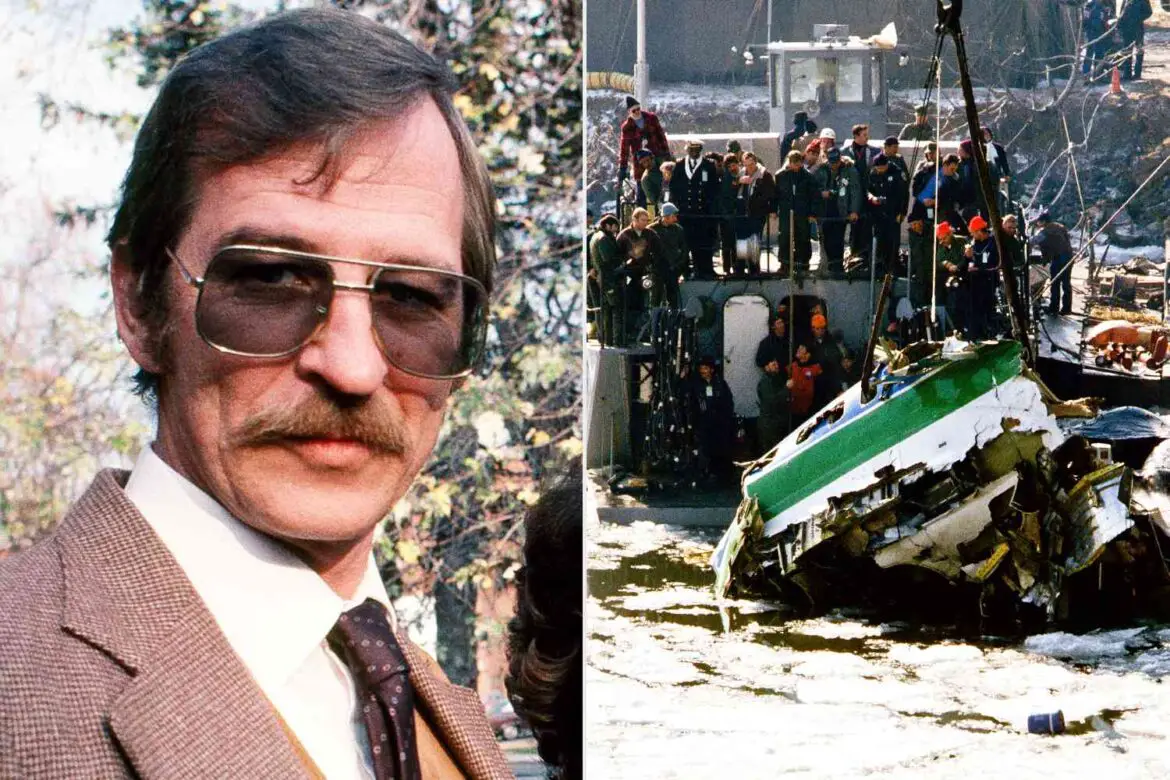On Jan. 13, 1982, an Air Florida flight leaving what’s now Ronald Reagan Washington National Airport (formerly Washington National Airport) scraped over the 14th Street Bridge upon take off and plummeted into the icy Potomac River, killing 78 passengers, crew members and impacted motorists.
Only five of those aboard the aircraft survived the tragedy, including Joseph Stiley.
On Wednesday, Jan. 29, an American Airlines passenger plane collided with a U.S. Army Black Hawk Helicopter and crashed into the same body of water where Stiley sustained life-altering injuries and nearly drowned, but somehow made it out of the Potomac.
In the wake of the most recent disaster, there were no survivors. There were 60 passengers and four crew members on the American Airlines plane and three soldiers in the helicopter.
When news of the catastrophic accident reached Stiley, now 86, at his current residence in Puerto Escondido, Mexico, he was dually overcome by deep sadness and reminded of the gratitude he felt almost exactly 43 years ago.
Never miss a story — sign up for PEOPLE’s free daily newsletter to stay up-to-date on the best of what PEOPLE has to offer, from juicy celebrity news to compelling human interest stories.
AP Photo/Dennis Cook
“The memories just make me realize how lucky I am. I did what I had to do and it worked,” he tells PEOPLE exclusively one day after the mid-air collision. “I also say to myself, ‘Joe, you’ve analyzed and you made a decision, and then it kept you alive.’ ”
As a licensed pilot himself, Stiley was particularly equipped to handle the 1982 crash when it happened. Thanks to his extensive military training and in-flight expertise, he knew how to properly brace for impact from seat 18C, as he remembers specifically. He also suspected something was off before the plane even took off.
“I was a busy flight instructor and I specialize in teaching aeronautics and instruments … I went through a survival school for pilots,” he explains. “I knew we were in deep s— before we were off the runway.”
The National Transportation Safety Board determined several probable causes for the Air Florida Flight 90 crash. A report pointed to the crew’s failure to “use engine anti-ice during ground operation and takeoff” and “decision to take off with snow/ice on the airfoil surfaces of the aircraft.” The NTSB also cited the flight captain’s “failure to reject the takeoff during the early stage when his attention was called to anomalous engine instrument readings.”
Mark Reinstein/Getty
Additionally, the report outlined contributing factors such as the prolonged delay between de-icing the plane and its takeoff and the crew’s limited experience operating in winter conditions.
In January 1982, Stiley was working a corporate role at General Telephone & Electronics, and he was flying to Florida on business alongside his assistant, Patricia Felch. When the plane started to falter, he told her to follow his lead and position herself just as he did.
“I wrapped myself in a little ball and got down and put my back against the seat in front of me with my hands over my head,” Stiley recalls. “All the fingers on my left hand and a couple of them on my right hand got broken, so it was a good thing I had my fingers where they were.”
Both he and Felch survived the accident, but those around them didn’t have the same knowledge to come out as lucky.
Bettmann/Getty
When Stiley bowed his head to protect himself in the crash-landing, he remembers seeing fellow passengers sitting stiffly upright and gripping the sides of their seats. “I know their necks snapped instantly when we hit,” he says.
He lost consciousness upon impact, but he came to as water was flowing into his nose and mouth. He saw that there was a split in the aircraft behind his seat and across the aisle. On his way to the escape, Stiley pulled out Felch and had her hold his leg while he reached out “as far as I could” and grabbed onto another nearby woman, fellow survivor Priscilla Tirado.
According to Stiley, Tirado almost caused them to drown as they tried to climb to safety. “She was looking for her baby, who was the last body recovered all the way down in the Chesapeake Bay a week later,” he notes. Tirado’s husband also died in the crash.
Flight attendant Kelly Duncan was 22 when she survived the crash. On the 30th anniversary of the crash, she spoke to the Seattle Times about the spiritual awakening she experienced during the 20 minutes she spent in the chilling waters of the Potomac River.
Bettmann/Getty
After some months away to recover, she did return to work for Air Florida, though she eventually left the job to study early childhood education. As of the 2012 interview, she worked at Christ Fellowship in Miami.
Stiley, on the other hand, has been reluctant to return to aviation since the crash. “I have only flown maybe three times commercially since then because I don’t trust airline pilots, especially the ones who were not military trained,” he tells PEOPLE.
Generally, Stiley hasn’t much kept up with his fellow survivors, especially since he, Tirado and Duncan are the only ones still living today. According to The Guardian, survivor Bert Hamilton died of a heart attack in 2002, and Stiley’s associate Felch was later diagnosed with cancer and died years after their plane went down.
“She didn’t know she had cancer at the time of the crash,” says Stiley.
David Hume Kennerly/Getty
He once went back to the site of the accident in honor of an anniversary, but Stiley has otherwise kept his space. He stopped talking about what happened soon after, having become fatigued answering the same questions over and over again. If people wanted to know what he thought, he would tell them to look it up in a newspaper.
The Seattle Times stated that Stiley was the most severely injured survivor, with more than 60 broken bones. He tells PEOPLE his body never full recovered and is still handicapped by spinal damage from that day and the steel pins doctors inserted to hold his shattered tibia in place.
“They were going to amputate because of the nature of the damage, and I’m sure glad they didn’t,” says Stiley.
After over four decades, the limp in his left leg might not serve as such a constant reminder of what happened to Air Florida Flight 90, but this week has made reliving the experience unavoidable for Stiley. He knows all the basic facts of the American Airlines crash, but he is otherwise keeping his “TV set turned off.”
To Stiley, there’s not much of a point in tuning into news more than he has to. He’s much more focused on his empathy for the families affected by the devastating accident.
Frank Johnson, The Washington Post via Getty
“My heart goes out to all the families and it goes out to those that died, but of course, they don’t know that,” he tells PEOPLE. “My biggest concern now is for the probable children that have just lost a parent … and of course the spouses.”
Each time Stiley mentions the lives lost on Wednesday night, he can’t help but appreciate the fact that he was able to prevent a few deaths — including his own — when it happened to him.
“I was alert to what was happening and I figured out what to do and did it, and I brought somebody else out, and I brought [out] a lady that was sitting beside me,” he continues. “I remind myself of that sometimes.”




